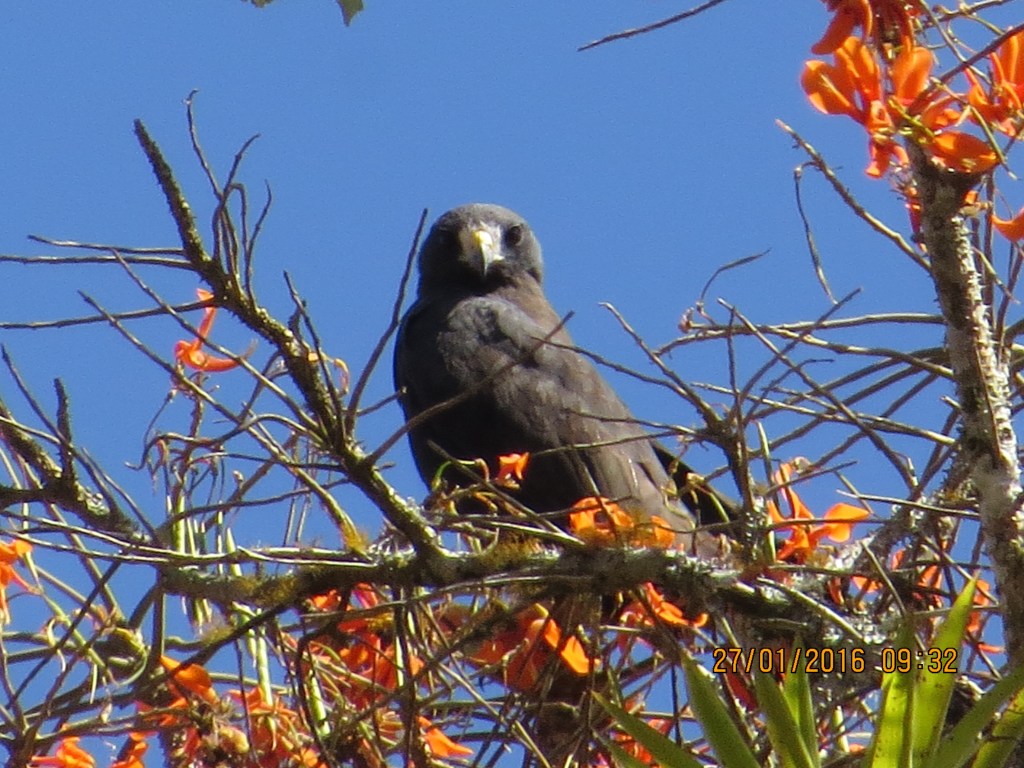Zone-tailed Hawk (Buteo albonotatus): Gavilán colifajeado; Buse à queue barrée; Mohrenbussard
The CATIE campus at Turrialba remains one of the local sites most visited by birders and boasts an impressive sightings list of nearly 400 different species. Granted, the CATIE property is very extensive and covers a wide range of habitats, but the single most attractive location for birders is definitely the small lake (el laguito) in the heart of the campus.

The signature species for the lake is actually the Boat-billed Heron (Cochlearius cochlearius), which in our area can be found only here at this location and will be the subject of my next post. However, John and Milena very recently had the good fortune last week to be at the CATIE laguito when a rather large hawk flew over fairly low before being chased off by angry Tropical Kingbirds.

The flight silhouette of the Zone-tailed Hawk is thought to mimic that of the common Turkey Vulture (Cathartes aura), a scavenger species that is only very rarely a threat to the live prey of the predatory hawks. Like the Turkey Vulture, the Zone-tailed also tends to hunt fairly low over the ground. However, the broad white tail-band that you see, one of several, clearly distinguishes this uncommon raptor from the vulture.

The species is rarely seen perched, so the next photograph, from a visit to CATIE in early 2016, is a bit unusual. The species nested there (on campus!) that year but was perhaps seen only by John, as his was the only report.

Though nowhere common, it ranges widely from the southern United States, where an individual preying on Common Starlings (Sturnus vulgaris) was photographed as far north as the Napa Valley in California in 2018. There has even been one substantiated report from Nova Scotia! From Costa Rica southwards its range extends to Paraguay and northern Argentina. The Zone-tailed Hawk prefers dry country with access to water and it is rarely found in the highlands anywhere above around 1500 m. This raptor is quite uncommon in the Turrialba area, where the species (and quite possibly the same individual) has been reported on only three other occasions so far this year. You can find the eBird reports at:
The next post will find us back at the CATIE lake with the Boat-billed Heron in nesting season.

